For many fisherman, big rains that lead to high water are a reason to stay home. After all, why venture out to your local stream or river when it's "blown out". Off color water, churning rapids, water up in the trees. Surely this is no time to catch fish.
Those who have put in hours on the river during times of high water know the above to be false. They also hope that the majority of anglers go on thinking it is true. High water days are often lonely days on the river, much to the delight of those who have become adept at fishing during such conditions.
The reality is that, during the high water conditions caused by runoff from storms and snowmelt, trout often move into relatively predictable locations within a river. When you take into consideration that reading the water of a high and turbid river can often be easier than reading the water of a river in its normal state, the possibilities begin to look up.
As water levels rise and water clarity drops, trout begin to move out of their normal holding lies. A trout isn't going to hold in a raging, unpredictable current. And, despite a trout's excellent visibility in turbid water, as conditions worsen a trout will move to water with increased clarity where it is easier to spot food in the current.
Locating the areas in the stream where a trout will move to find slower current and better visibility isn't difficult. They are almost invariably along the banks, where boulders, trees and other obstructions break the current and provide a refuge for energy-conserving trout. When discussing strategy for fishing rapids, Gary Borger calls this area the "secret river", and most of the same rules apply here.
Fishing these areas can be surprisingly productive. Nymphs, small streamers and attractor dries like stimulators or even caddis can entice displaced trout to break from their new holding patterns and feed. High water also concentrates fish, as normally abundant holding lies are abandoned and fish seek better — and now more exclusive — real estate, a possible reason for why larger trout are so commonly caught during times of high water.
The next time spring rains or snowmelt send anglers fleeing from your local river, take the time to explore. The skills you'll quickly gain by putting time in on the river during high flows will pay dividends of riverside solace for many years to come. The big trout you might catch won't hurt either.




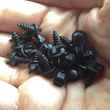












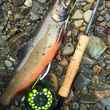









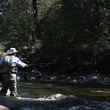

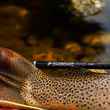
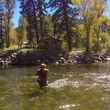
Comments